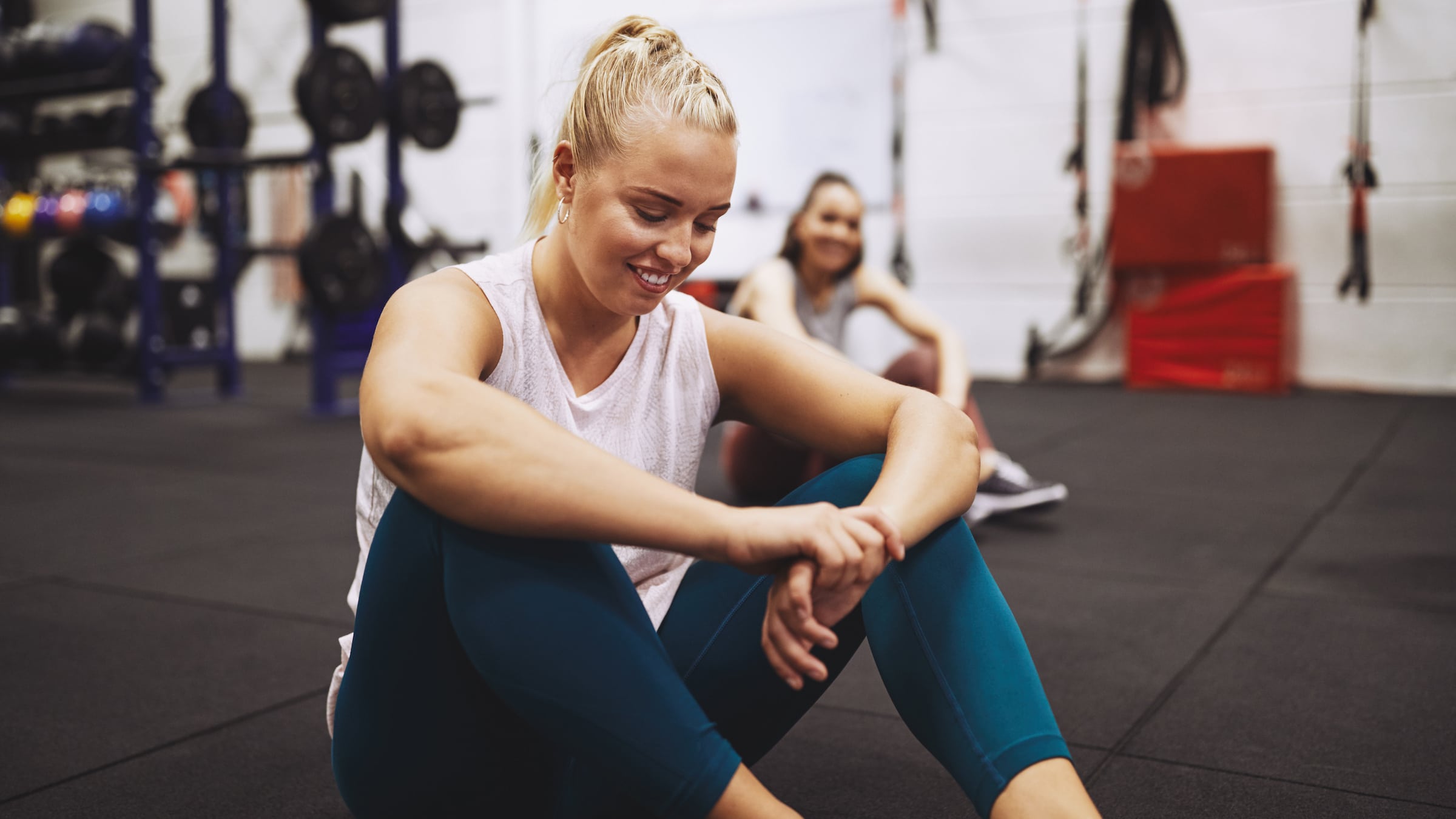- Carb cycling is a dietary approach traditionally used by athletes use to maximize the body’s use of carbohydrates for performance.
- On a carb cycling schedule, you alternate between high-carb and low-carb days.
- A carb cycling meal plan can help you lose fat and increase muscle mass, but it’s not designed for weight loss.
Low-carb diets help some people lose weight, but they’re not for everyone—especially if you’re a bread lover.
Carb cycling is a slightly less restrictive approach to cutting carbs. While it can lead to weight loss, it can also lead to weight gain, depending on how it’s done.
We talked to Noom Health Coach Ashley Bannister, MS, RDN, to learn more. Read on to find out what carb cycling is, how it works, and what it looks like in practice.
Note: Consult your healthcare provider before making dietary changes.
What is carb cycling?
Carb cycling is a dietary approach designed to maximize your body’s use of carbohydrates for performance.
On a carb cycling schedule, you alternate between high-carb and low-carb eating.
How many carbs you eat each day depends on your exercise routine and the intensity of your workouts. You eat more carbohydrates on workout days. On rest days, you eat less.
Carb cycling has been popular among serious athletes for improving performance, increasing muscle mass, and losing body fat for some time. Now it’s becoming popular among non-athletes as well.
How does carb cycling work?
Carb cycling works by tailoring your carb intake to your exercise routine.
Glucose, which you get from carbohydrates, is your body’s primary source of energy. That’s why people often talk about eating carbs as a pre-and post-workout snack.
Real results with a personalized weight loss program
Take the quiz!

Glucose that doesn’t get used right away gets stored in your body as glycogen for later use. Excess glucose may also be stored as fat.
On training days, you eat a lot of carbs, and you use them for energy, says Bannister.
On low-carb days, you eat fewer carbs because you don’t need them for energy. Instead, the goal is that your body uses fat stores for energy.
Carb cycling meal plan
So what does carb cycling look like in practice?
Bannister created this 7-day carb cycling meal plan for weight loss that will give you an idea of what to expect.
| Day | Breakfast | Lunch | Dinner | Snacks | Total Calories / Carbs |
|---|---|---|---|---|---|
| 1 Low- carb | • 3 scrambled eggs • 2 pieces of whole wheat toast • 1 tablespoon butter | Turkey and cheese lettuce roll ups • 2 slices of American cheese • 4 ounces of deli turkey• Lettuce | Chicken Caesar Salad • 4 ounces boneless, skinless chicken breast • 2 cups chopped romaine • 2 tablespoons Parmesan cheese • 2 tablespoons Caesar dressingcroutons | AM • 3 ounces baby carrots • 2 tablespoons hummus PM • 1 single serving cup of nonfat Greek yogurt (5.3 ounces) • 1 string cheese • 1 handful of almonds | 1474 calories 83g carbs |
| 2 High- carb | • 1 cup oatmeal • 1 cup blueberries • 1 teaspoon honey | • Ham (4 slices) • Cheese (1 slice) • Whole wheat bagel | Homemade burrito bowl • 1 cup brown rice • 1/2 cup black beans • 4 ounces boneless, skinless chicken breast • diced tomatoes • chopped onion• chopped bell pepper • 1/4 cup shredded cheese • 1 tablespoon sour cream | AM • 1 banana • 1 tablespoon peanut butter PM • 1 cup trail mix | 1526 calories 205g carbs |
| 3 High- carb | Oatmeal Smoothie | Chicken Noodle Soup (1 cup) | • 1 cup roasted sweet potatoes • 1 cup roasted broccoli • 4 ounces of boneless, skinless chicken breast | AM • 1/2 cup Crunchy Roasted Chickpeas PM • 1 protein bar with minimal ingredients (e.g. KIND, RX Bar, Larabar) | 1488 calories 181g carbs |
| 4 Low- carb | Low Carb Green Smoothie | Egg Roll in a Bowl | Instant Pot Butter Chicken served with riced cauliflower | AM • 2 hard-boiled eggs PM • Veggies (sliced bell pepper, carrots, and celery) • 4 tablespoons hummus | 1451 calories 79g carbs |
| 5 High- carb | Protein Pancakes • 1 banana • 2 tablespoons maple syrup | Quinoa Sweet Potato Salad | Healthy Fettuccine Alfredo | AM • 1 slice whole wheat toast • 1 tablespoon peanut butter PM • 1 cup trail mix | 1561 calories 205g carbs |
| 6 High- carb | Make Ahead Breakfast Parfaits | Turkey and Cheese Wrap | Turkey Chili | AM • 1 protein bar with minimal ingredients (e.g. KIND, RX Bar, Larabar) PM • 1 apple • 1 tablespoon peanut butter | 1499 calories 223g carbs |
| 7 Low- carb | Bake Ahead Egg Muffins (2 servings) | Bento box • 2 hard-boiled eggs • 1.5 ounces of low-fat cheese • 3 slices deli turkey • 1/4 sliced cucumber • 1 serving baby carrots | Stuffed Bell Peppers | AM • 1 single serving cup nonfat Greek yogurt • 1 cup berries PM • 1 handful of almonds • 1 light string cheese | 1439 calories 83g carbs |
Can carb cycling help with weight loss?
Carb cycling is a short-term regimen designed to improve athletic performance. It’s not a long-term weight loss program.
However, it can lead to weight loss. But it can also lead to weight gain, says Bannister.
Ideally, your high-carb days coincide with high-intensity training days. That way, you’re using those carbohydrates for energy rather than storing them or converting them into fat.
Then, on your low-carb days, you’re giving your body a chance to burn fat rather than glucose for energy. That’s what leads to fat loss.
However, Bannister says, keep in mind that energy you take in that isn’t used may get stored in your body as fat. So if you’re consuming too many calories (in the form of carbs) on the days you’re not exercising, you may end up gaining weight.
Another thing to consider is that carbohydrates aren’t just in bread and pasta. They’re also in fruit, starchy veggies, and dairy products. Cutting these foods from your diet may mean missing out on essential nutrients.
Reflection exercise
If you were on a carb cycling schedule, what would you eat on low-carb days?
Make a list of healthy, low-carb foods you enjoy. (You can use the meal plan above as a guide.)
Does carb cycling have any additional benefits?
Bannister says that cycling can be helpful for serious athletes who need extra fuel for training. (Think triathletes and marathoners.)
It can also help bodybuilders put on muscle while losing fat.
But there isn’t much research available on carb cycling, Bannister continues. So we don’t really know what the long-term benefits—or drawbacks—are.
How to do carb cycling for weight loss
At Noom, we generally don’t recommend restricting entire food groups, and carb cycling is typically not a weight loss strategy.
That said, we’re here to support you in your health goals.
Losing weight requires a calorie deficit (burning more calories than you consume). To lose weight with carb cycling, you also need to maintain a calorie deficit.
A good way to do that is to choose whole, nutritious foods with low caloric density.
Caloric density refers to the amount of calories found in a specific amount (weight) of food.
For example, a half-pound of steak has more than 600 calories, but a half-pound of tuna only has 120 calories.
It’s the same amount of food, but tuna has a lower caloric density than steak.
Low-calorie density foods are usually full of water and satiating nutrients like protein, fiber, and healthy fats. That’s how they help fill you up with fewer calories.
So on low-carb days, you don’t want to load up on processed, high-calorie density foods like bacon. Instead, focus on healthy fats like nuts, seeds, and olive oil, as well as lean protein and non-starchy vegetables.
On high-carb days, choose whole foods with complex carbohydrates, like whole grains, oatmeal, potatoes, legumes, and fruit and veggies.
And keep in mind: If you’re not getting a lot of exercise, carb cycling probably isn’t for you.
What to eat on low-carb days
Although we don’t recommend restrictive dieting here at Noom, we know that reducing carbs can help some people lose weight.
Whatever approach feels right for you, we’re here to help.
Check out this list of healthy, low-carb foods that will keep you feeling full on a low-carb diet.


